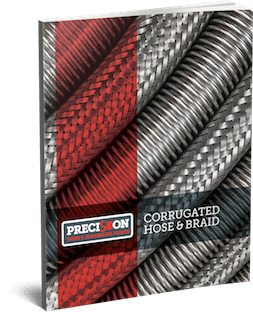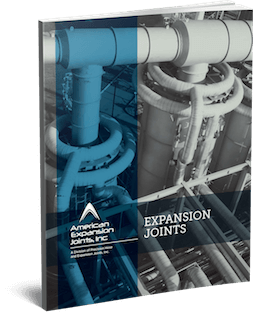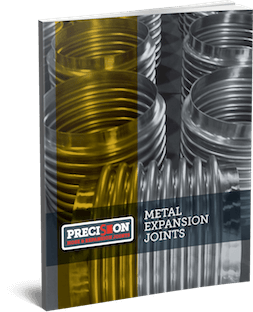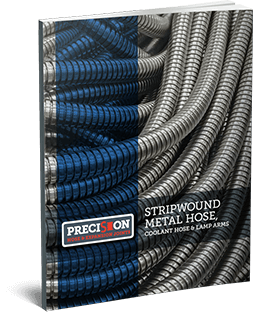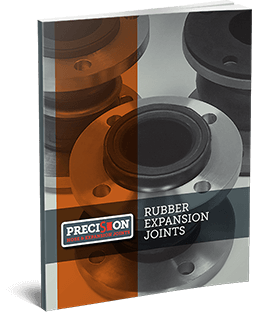Temperature Correction Factors For Elevated Temperature Applications
As the service temperature increases, the maximum pressure a hose assembly can withstand decreases. The material from which the hose is made and the method of fitting attachment (mechanical, soldered, welded, silver brazed) determines the maximum pressure at which an assembly can be used.
Multiply the listed correction factor times the hoses room temperature rating to determine elevated temperature maximum working pressure.
Material |
||||
|---|---|---|---|---|
| Temperature °F | Bronze | Steel | Monel | Stainless Steel |
| Room Temperature | 1.0 | 1.0 | 1.0 | 1.0 |
| 150 | 0.92 | 0.99 | 0.98 | 0.97 |
| 200 | 0.89 | 0.97 | 0.94 | 0.94 |
| 250 | 0.86 | 0.96 | 0.92 | 0.92 |
| 300 | 0.83 | 0.93 | 0.90 | 0.88 |
| 350 | 0.81 | 0.91 | 0.89 | 0.86 |
| 400 | 0.78 | 0.87 | 0.88 | 0.83 |
| 450 | 0.75 | 0.86 | 0.87 | 0.81 |
| 500 | 0.81 | 0.86 | 0.78 | |
| 600 | 0.74 | 0.84 | 0.74 | |
| 700 | 0.66 | 0.82 | 0.70 | |
| 800 | 0.52 | 0.75 | 0.66 | |
| 900 | 0.50 | 0.70 | 0.62 | |
| 1000 | 0.65 | 0.60 | ||
| 1100 | 0.58 | |||
| 1200 | 0.55 | |||
| 1300 | 0.50 | |||
| 1400 | 0.44 | |||
| 1500 | 0.40 | |||
Saturated Steam Pressure Temperature
| Saturated Steam | Temperature °F |
|---|---|
| — | 0 |
| — | 20 |
| 29.74 | 32 |
| 29.67 | 40 |
| 29.40 | 60 |
| 28.89 | 80 |
| 27.99 | 100 |
| 26.48 | 120 |
| 24.04 | 140 |
| 20.27 | 160 |
| 14.63 | 180 |
| 6.46 | 200 |
| 0 | 212 |
| 5 | 227 |
| 10 | 238 |
| Saturated Steam | Temperature °F |
|---|---|
| 15 | 250 |
| 20 | 259 |
| 25 | 267 |
| 30 | 274 |
| 35 | 281 |
| 40 | 287 |
| 45 | 292 |
| 50 | 298 |
| 55 | 303 |
| 60 | 307 |
| 65 | 312 |
| 70 | 316 |
| 75 | 320 |
| 80 | 324 |
| 85 | 328 |
| Saturated Steam | Temperature °F |
|---|---|
| 90 | 331 |
| 95 | 335 |
| 10 | 338 |
| 102 | 341 |
| 110 | 344 |
| 115 | 347 |
| 120 | 350 |
| 125 | 353 |
| 130 | 356 |
| 150 | 366 |
| 175 | 377 |
| 200 | 388 |
| 225 | 397 |
| 250 | 406 |
| 275 | 414 |
| Saturated Steam | Temperature °F |
|---|---|
| 300 | 422 |
| 350 | 436 |
| 400 | 448 |
| 450 | 460 |
| 500 | 470 |
| 600 | 489 |
| 700 | 505 |
| 800 | 520 |
| 900 | 520 |
| 1000 | 546 |
| 1250 | 574 |
| 1500 | 606 |
| 2500 | 669 |
| 3000 | 696 |
| 3191 | 705 |
Flow Velocity: When to use Liners
Liquid or gas applications conveying media at high velocity should use an interlock liner in the hose assembly. This liner will decrease the turbulence caused by the high velocity and reduce the vibration that will occur. A liner is recommended if the velocity is greater than the following:
| Media | Hose Alignment | Maximum Velocity without Liner (ft./sec.) |
|---|---|---|
| liquid | straight | 70 |
| liquid | 45° bend | 55 |
| liquid | 90° bend | 35 |
| gas | straight | 140 |
| gas | 45° bend | 110 |
| gas | 90° bend | 70 |
Conversion Formulas
| Definitions | Feet Per Second (ft./sec.) |
|---|---|
| gph: gallons per hour | (gph ÷ ID2) x 0.0068 |
| gpm: gallons per minute | (gpm ÷ ID2) x 0.4083 |
| cfh: cubic feet per hour | (cfm / 1D2) x 3.0558 |
| cfm: cubic feet per minute | (cfm / 1D2) x 3.0558 |
| cfs: cubic feet per second | (cfs / 1D2) x 183.35 |
Pressure
Maximum Rated Working Pressure
The maximum pressure that a hose should be subjected to on a continuous basis. Precision Hose and Expansion Joints establishes this rating by multiplying the nominal rated burst pressure by 25%. Precision Hose and Expansion Joints Catalog pressure is calculated at 70°F.
Maximum Rated Test Pressure
The maximum pressure a hose should be subjected to during proof pressure or system testing. Hose corrugation deformation will occur if the maximum rated test pressure is exceeded. The maximum rated working pressure is multiplied by 150% to determine the maximum rated test pressure.
Nominal Rated Burst Pressure
The average pressure at which the core or braid will rupture at ambient temperature. Correct hose assembly fabrication procedure must be used to ensure the hose will meet Precision Hose and Expansion Joints Catalog pressures.
Pulsating or Shock Pressure
The performance of metal hose can be greatly reduced under this type of working pressure. Pressures are normally reduced by 50% in pulsating or shock pressure applications.
Pressure/Temperature Correction
Metal hose pressure capabilities decrease as the temperature increases. Consult the temperature correction factor table to determine pressure rating at elevated temperatures.
Safety Factors
The maximum working pressure should not be greater than 25% of the nominal rated burst pressure after correcting for the application temperature. The safety factor is generally expressed as a ratio of 4:1.
Pressure Drop
A pressure drop occurs in long hose runs. The amount of pressure loss is approximately 3 times that of steel pipe.
Media
Our metal hose assembly engineer must know what the hose will convey. Matching the application piping material is sometimes used as a guide in selecting the alloy for the metal hose. Metal hose is manufactured from thin wall material and may not have the same total life a heavier wall tube or pipe of the same material. Some factors to be considered when designing metal hose assemblies include corrosion, abrasion, and viscosity of the media conveyed.
Abrasion
For internal abrasion, premature failure can occur if the media is abrasive. The use of interlock liner may extend the life of a hose assembly. For external abrasion, a protective cover may be used to extend hose life. This cover is normally stainless steel interlock hose.
Corrosion
Material selection of the core and braid should take into consideration the corrosive nature of the media conveyed by the hose assembly and the outside environment.
Viscosity
Flow of viscous media can be enhanced by incorporating the use of a jacketed hose assembly. This design utilizes an inner hose that is encapsulated by an outer hose.
Temperature:
Each hose material had unique temperature capabilities. Consult Temperature Correction Factor table for temperatures.
Testing:
Standard testing of the weld and structural components of the hose assembly include hydrostatic testing and pneumatic testing (All of our hose assemblies are 100% tested). Other testing methods used include mass spectrometer, cold shock and dye penetration.
Cleaning:
Precision Hose & Expansion Joints offers special cleaning of corrugated hose for oxygen service and other applications.

